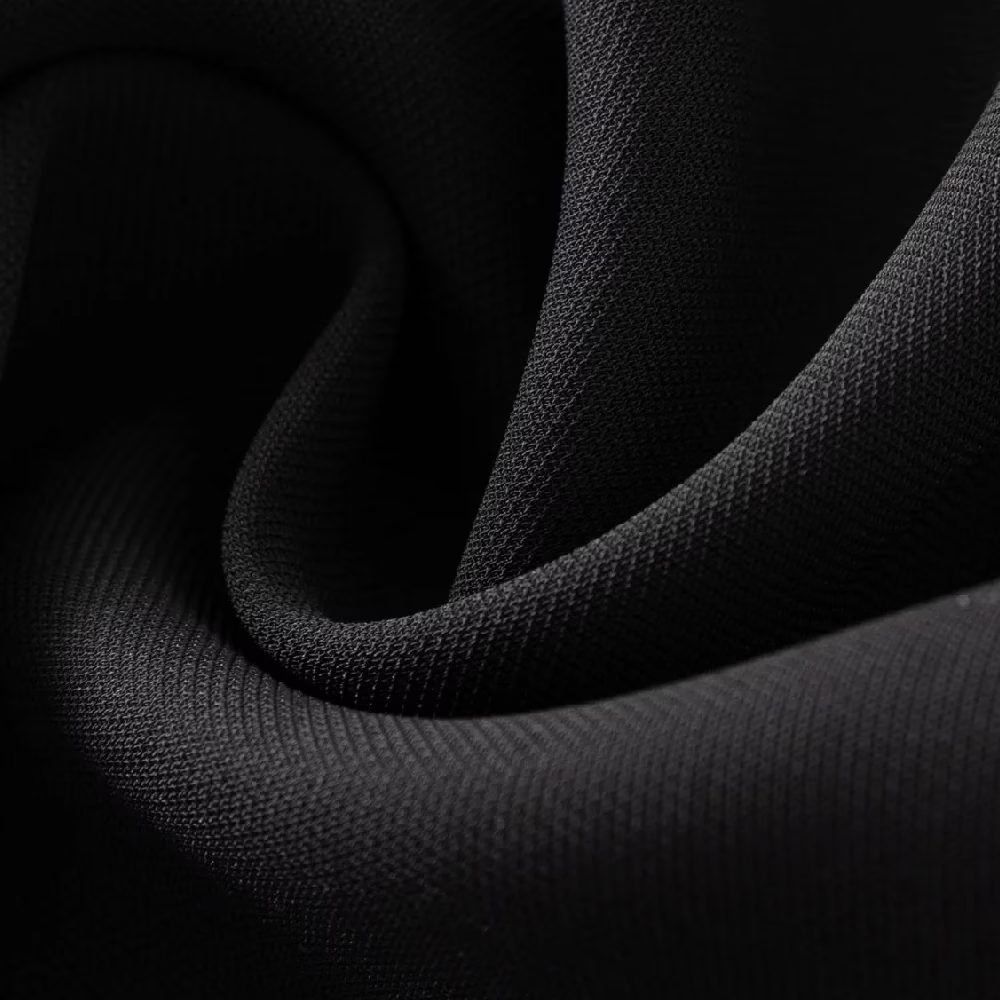For decades, polyester-cotton (poly-cotton) blends were dismissed as “budget fabrics”—cheap, scratchy, and prone to pilling. A quick Google search for “poly-cotton pros and cons” still surfaces outdated rants: “feels like plastic,” “doesn’t breathe,” “loses shape after washing.” But as a clothing exporter who’s watched global fashion trends shift for 12 years, I’m here to declare: The stigma is dead. Today, poly-cotton blends are experiencing a renaissance—driven by cutting-edge technology, sustainability demands, and a new generation of consumers who prioritize function over fashion. Let’s unpack why this once-maligned fabric is now a wardrobe staple.

The Old Narrative: Why Poly-Cotton Got a Bad Rap
To understand the shift, we need to revisit the past. Early poly-cotton blends (developed in the 1950s) used coarse polyester fibers (200–300 denier) blended with short-staple cotton. The result? A stiff, non-breathable fabric that pillled relentlessly. Marketing campaigns of the era leaned into its “affordability,” but consumers associated it with “cheapness”—a label that stuck for decades.
But times have changed. Modern poly-cotton blends bear little resemblance to their predecessors. Advances in fiber technology, weaving techniques, and finishing processes have transformed them into high-performance fabrics. Let’s explore the three key drivers of this value shift.
1. Fiber Innovation: Smaller, Smarter, Stronger
The biggest game-changer? Microfiber technology. Today’s poly-cotton blends use ultra-fine polyester (50–100 denier) and longer-staple cotton (1 1/32”–1 1/8”), creating a fabric that’s:
- Softer: Microfibers mimic the texture of premium cotton, eliminating the “plastic” feel.
- Stronger: Longer cotton staples and high-tenacity polyester reduce pilling and tearing.
- Breathable: A looser weave (e.g., 40s–60s thread count) allows air circulation, addressing the “sweaty” reputation of old blends.
Example: A leading outdoor brand switched to 80s poly-cotton (80 threads per inch) blended with 1 1/8” cotton for their hiking shirts. The result? A fabric that wicks moisture 30% faster than their old 60s blend—while feeling “like a second skin.”
2. Functional Treatments: Beyond Basic Blends
Modern poly-cotton isn’t just about fiber size—it’s about engineering functionality. Brands now treat blends with advanced coatings and finishes to meet specific needs:
- Quick-Dry: Hydrophobic coatings (e.g., Teflon®) repel water, making the fabric ideal for activewear. A gym shirt with this treatment dries in 20 minutes vs. 2 hours for pure cotton.
- Odor-Resistant: Silver-ion or antimicrobial treatments kill bacteria, reducing “post-workout stench.” Popular in travel wear and school uniforms.
- UV Protection: UV-absorbing additives block 90%+ of harmful rays—critical for outdoor gear.
- Anti-Wrinkle: Resin coatings smooth fibers, keeping shirts crisp even after being stuffed in a backpack.
Case Study: A Japanese brand used nano-coating on their poly-cotton blazers. The fabric repelled coffee spills, resisted wrinkles, and stayed cool in 35°C heat—turning a “cheap” blend into a “premium” workwear staple.
3. Sustainability: The Eco-Edge Over Pure Cotton
As consumers demand greener options, poly-cotton blends are gaining an edge:
- Resource Efficiency: Polyester uses 50% less water than cotton to produce. Blending it with cotton reduces overall water consumption by 30–40%.
- Durability: Poly-cotton garments last 2–3x longer than 100% cotton (polyester resists stretching and thinning). This aligns with the “slow fashion” movement.
- Recyclability: Many brands now use recycled polyester (rPET) in blends—diverting plastic bottles from landfills.
Market Data: A 2024 report by Textile Exchange found that poly-cotton blends with sustainability certifications (e.g., GRS, Oeko-Tex) saw a 45% YoY sales increase in Europe—outpacing pure cotton by 22%.
Who’s Wearing It Now? The New Consumer Base
Gone are the days of poly-cotton being “for budget shoppers.” Today, it’s embraced by:
- Outdoor Enthusiasts: Hiking, camping, and cycling gear (lightweight, quick-dry, durable).
- Urban Professionals: Wrinkle-resistant work shirts and travel suits (no ironing needed).
- Parents: School uniforms and kids’ clothes (stain-resistant, easy to wash).
- Gen Z: Streetwear and casual fashion (affordable, trendy, and “Instagram-worthy”).
FAQs: Your Poly-Cotton Questions, Answered
Q: Is poly-cotton blend as breathable as pure cotton?
A: Modern loose-weave blends (40s–60s thread count) are nearly as breathable as 100% cotton. For intense workouts, opt for moisture-wicking treatments.
Q: Does poly-cotton pill more than pure cotton?
A: No—long-staple cotton and microfiber polyester drastically reduce pilling. Look for “anti-pilling” labels or blends with 30%+ cotton.
Q: Is poly-cotton blend eco-friendly?
A: It depends. Blends with recycled polyester (rPET) or organic cotton are sustainable. Avoid blends with virgin polyester (derived from fossil fuels).
Q: How do I care for poly-cotton garments?
A: Wash in cold water (hot water damages fibers), tumble dry on low, and avoid bleach. Iron on medium heat—polyester resists wrinkling, but cotton benefits from a light press.
Wrapping Up: Poly-Cotton Is More Than a Fabric—It’s a Solution
The value of poly-cotton blends lies not in their price tag, but in their ability to solve real-world problems: staying cool, dry, and comfortable in a fast-paced world. As a clothing exporter, I’ve seen brands like Patagonia and Uniqlo lead this shift—proving that “affordable” and “premium” can coexist.
At Sheen, we specialize in sourcing high-performance poly-cotton blends for global markets. Our latest collection features moisture-wicking, anti-odor, and UV-protective blends—perfect for activewear, workwear, and casual fashion.
Ready to upgrade your wardrobe (or your product line)? Explore our poly-cotton blends, download our free “Fabric Performance Guide,” or reach out for a personalized consultation.
Stay functional. Stay stylish. Stay Sheen.

